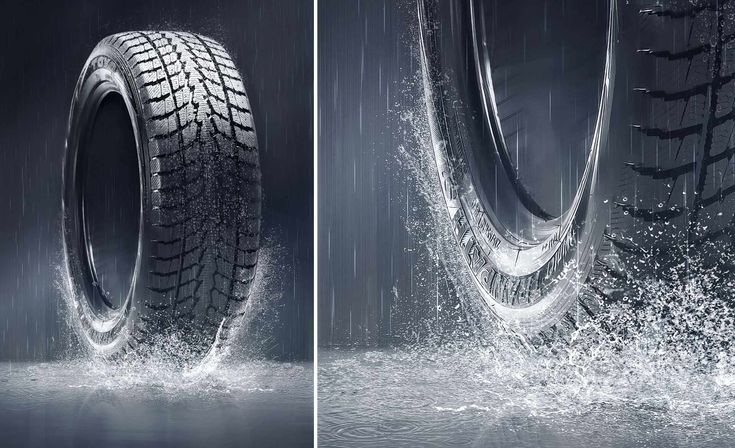Authored by: Tractor tyre expert | 04 January 2021
Ballasting is used to improve the stability of your tractor and provide efficient traction when your rear mounted implement is heavy or requires a lot of tractive force.
The most common ballasting technique involves adding weights to the front to rebalance the load distribution over all four wheels and make it possible to increase traction capacity and control slippage.
There is a ballasting solution which is very simple and which costs next to nothing, allowing you to increase the weight of your tractor if you work frequently with heavy implements: the solution is to water ballast your tractor tyres. In this article we will explain how to perform water ballasting and discuss its advantages and drawbacks, so that you can decide more easily whether to use this technique with full knowledge of all the parameters.
Before going ahead with water ballasting, a certain number of parameters must be taken into consideration. There are effectively several different specific cases possible, which depend on your equipment, your current tyres, the global weight of your implements or your tractor and, lastly, on your tractor’s most frequent tasks.
Given that the different tyres on offer on the market, with our without inner tubes, may be ballasted using water. First, you should check whether they have a specific air/water valve. If so, your tyres are suitable for water ballasting.
New tractors generally come equipped with air/water valves.
You may have several reasons to add ballast to your tractor, but the main reason is that your tractor is too light overall compared to the weight of your implements or your use of the tractor, with mounted, semi-mounted or trailed implements, for example during tilling which requires tractive force.
There is a basic rule to follow to establish whether your tractor is too light or not, which is the power-to-weight ratio: this ratio must be at least 49 kilos per horse power.
The risk of slippage is often inevitable if the tractor mass is globally inadequate. To balance out the mass and lower the centre of gravity of the combination vehicle, water ballasting the four tractor wheels is the simplest and least costly solution.
Lastly, it is also possible to resort to water ballasting because you just want to rebalance the axle opposite the implement’s load distribution, by just filling up the front wheels if you have a lot of weight on the rear axle or inversely, by filling up the rear wheels if you are using a front loader, for example.
This type of ballasting may be used to rebalance the vehicle permanently if you always use the same implements in similar conditions. As a general rule, weight distribution is 60% on the rear axle and 40% on the front axle.
Whether you use radial or bias tyres, you must take account of a certain number of details before going ahead with water ballasting:

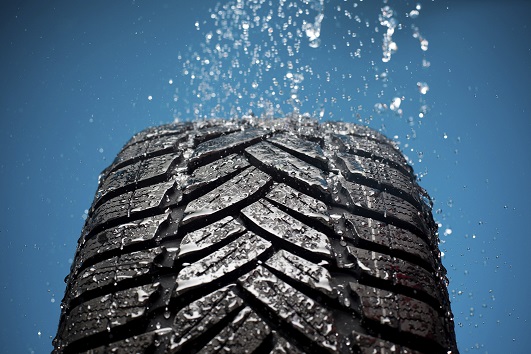

Like ballasting with metal weights, water ballasting brings a certain number of advantages as long as you respect the water filling procedure limited to 75% of the tyre volume so as to be able to adjust the pressure with the remaining 25% of air.
Good ballasting helps you take full advantage of the capacities of your agricultural machine, your tyres and your implements with optimal traction and minimal slippage.
Water ballasting only requires a set of valves, a few hoses, some anti-freeze and a lot of water, which is why it is the most economical solution available compared to other solutions, such as weights attached to the rims or the use of metal weights.
You can ballast your agricultural tyres almost at no cost by adding from a few hundred to a thousand litres more to your front or rear tyres, depending on the tyre model.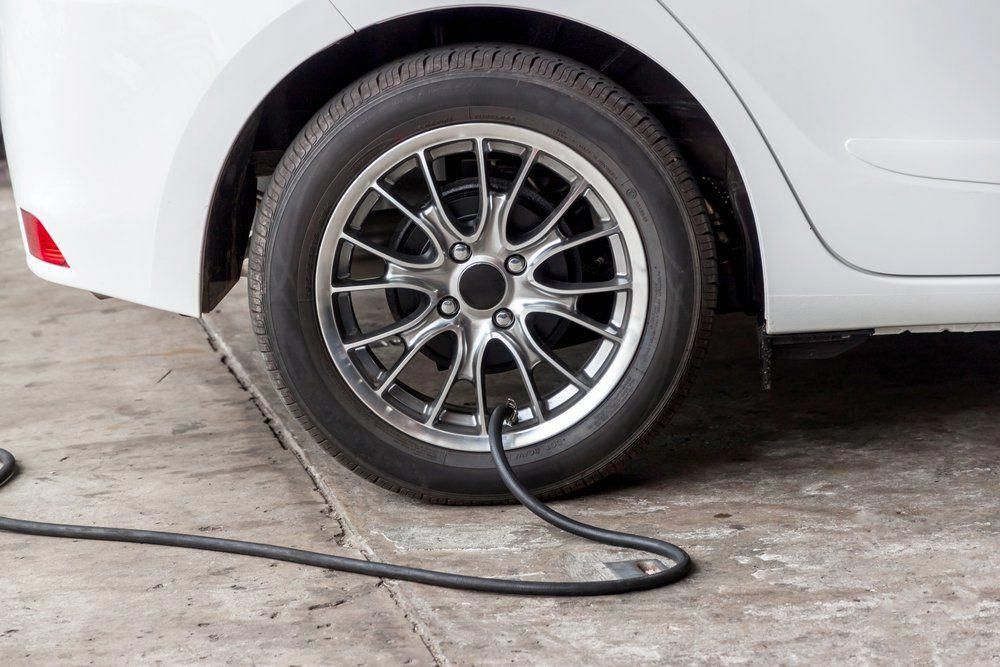
| TYRE DIMENSION | DIMENSION RIM | WATER QUANTITY AT 75% OF THE TYRE VOLUME |
| 480/70 R28 | W15L | 250 litres |
| 540/65 R28 | DW16L | 300 litres |
| 600/65 R28 | DW18L | 380 litres |
| 650/65 R38 | DW23B | 630 litres |
| 710/70 R42 | DW25B | 800 litres |
| 750/75 R46 | DW25B | 1100 litres |
| 900/65 R46 | DW30B | 1400 litres |
With water ballasting, it’s impossible to go wrong in terms of the load that your tractor can carry, which is always in proportion to your tyres and well distributed at the front and at the rear. There is no risk of overloading or, worse still, mechanical breakdown, because the volume of water is proportional and limited.
There is no risk of overloading or, worse still, mechanical breakdown, because the volume of water is proportional and limited.
Slippage is an occurrence which may be linked to different causes (tyre wear, wet ground…etc.), but it may occur when the front of the tractor is lighter than the rear, in particular when the vehicle is towing heavy agricultural tooling.
The load transfer to the rear axle tends to result in the front axle lifting as a result of the see-saw effect. To help the front tyres grip the ground better, water ballasting at the front of the vehicle is an efficient way to limit slippage and limit premature wear to your tyres.
The flatter the tractor is on the ground, the better the traction. When the rear axle sinks into the soil due to the weight of the implement or the tractive effort, the front of the tractor could have less tractive power.
To counter this problem, water ballasting of the front tyres is a good solution, as the rear implement remains proportional to the size of the tractor and its power.
When the tractor has a correct load balance, each tyre applies an equivalent tractive force to the ground. With the four tyres transmitting all your engine’s power to the ground evenly, you will improve overall traction and cover more ground without using up more energy, which means that you could save time.
Although water ballasting is much less expensive than ballasting with metal weights, there are nonetheless some disadvantages with this technique.
First of all, it is not suitable for rapid work if you are looking to save time on the installation of additional weight and it is even less suitable for travelling at speed on the road.
It’s not always a comfortable solution, because the movement of the mass of water in the front tyres produces a pendulum effect when driving and braking and could create a loss of steering control when cornering. It is essential to respect the ballasting proportions, i. e. 75% of water per tyre, to limit these disadvantages.
e. 75% of water per tyre, to limit these disadvantages.
Before opting for water ballasting, which is used for long periods, you need to be aware of the following drawbacks.
Water ballasting can be really useful when working in the fields, because it makes it possible to rebalance the load between the front and back of the tractor or balance out the combination vehicle as a whole.
This technique is recommended when you are transporting heavy implements, because the load is spread evenly and the four tyres have more grip. You will obtain better traction in this way and slip less, which is highly positive.
However, while water ballasting is useful when working in the fields, there are major drawbacks for all the other ways you use your tractor.
For example, on the road or when you are driving without implements, water ballast is not necessary and may lead to additional fuel consumption. You are effectively pulling a dead weight, bearing in mind that 1 tonne of extra ballast, so request addition fuel consumption per hour.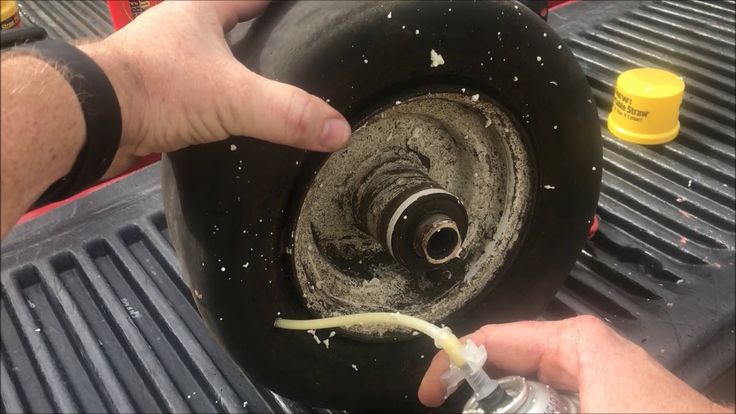
The dead weight generated by this water mass inevitably results in an extra cost which continues to add up over the year, even when you don’t actually need the ballast. Basically, with any dead weight there will be extra consumption, so in the end there is a financial loss.
Unlike the use of metal weight ballast which takes a few minutes if you have the right equipment (generally the metal weights placed at the front are removable and relatively easy to use), water ballasting requires several hours for the filling up process.
The implementation time for this process is therefore much longer, given that on average it takes 2 to 3 hours to fill up the tyres and around 2 more hours to empty them.
As this operation is not very quick to carry out, water ballasting is usually done for several months in a row.
When you ballast your tyres with water, the volume of air in the tyre drops to only 25% and the slightest loss of air may lead to a major variation in inflation pressure, which means that you need to check inflation pressure constantly.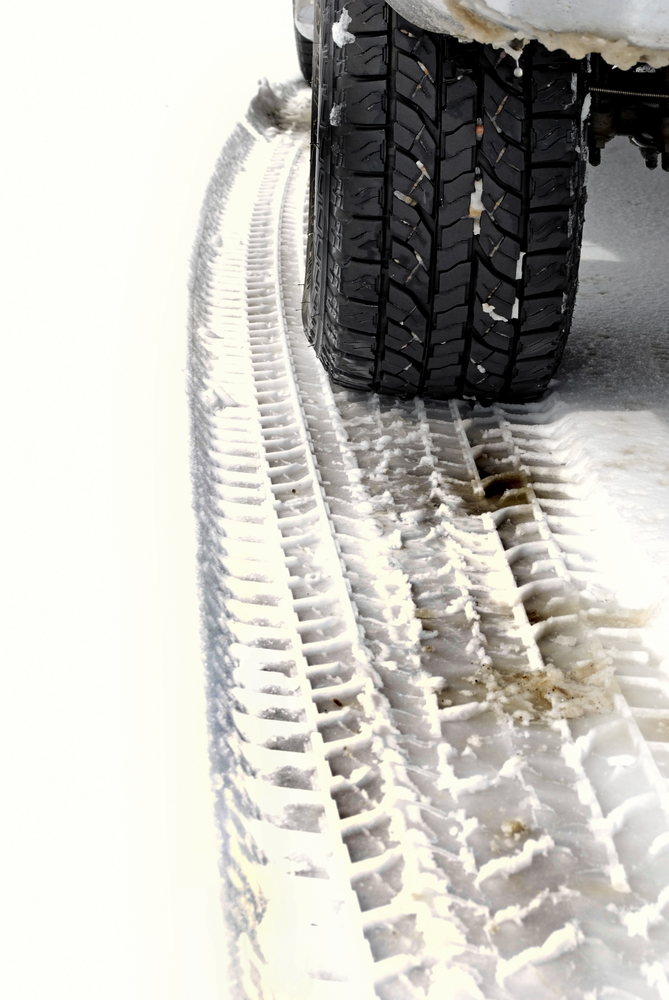
The little air remaining in the tyres also leads to a reduction in their shock absorption capacity, which has a negative impact on your comfort if you spend long periods on the road.
Water ballasting could be also incompatible with TPMS system (Tyre Pressure Monitoring System) when sensors are placed inside tyre.
Water ballasting brings certain inconveniences linked to weather conditions. As the technique consists in filling the agricultural tyre with water, there is a risk that this water might freeze during cold spells.
At altitude or in winter, you will have to use anti-freeze at temperatures of below 0°C to prevent the water in your tyres from freezing!
Adding anti-freeze, which represents around 20% of the volume of water, may cause problems for livestock farmers due to the risk of contamination of fodder crops and animal intoxication in the event of leaks or punctures.
Water ballast in tractor tyres when the tractor has no implement to pull may have serious consequences when driving on the road at speed.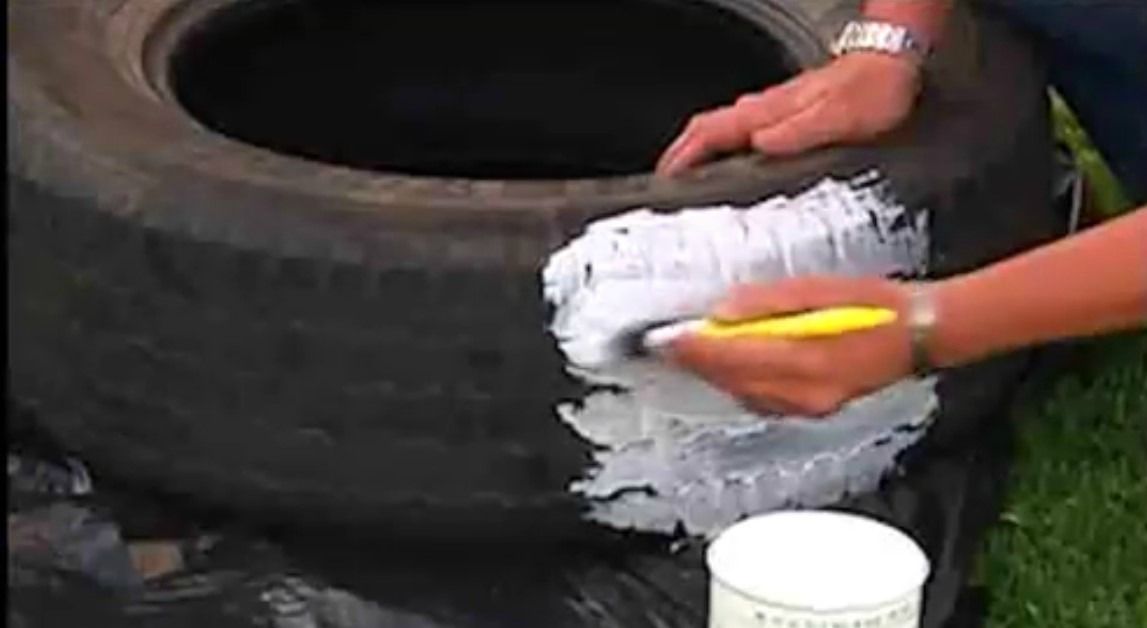
With the water contained in the wheels, there is an immediate swinging effect during rapid travel. When cornering, the mass of moving water in the tyres may produce a pitching effect, which could destabilise your combination vehicle. In this case, there is a potential high security risk.
When you have excessive or unnecessary ballast, the mass of water increases the global weight of your trailer, leading to an extra tractive effort. If the water ballast is unsuitable, badly calculated or not useful for the implements used, it will generate more disadvantages than advantages.
Water ballasting could be useful for load balanced but could be worse for your soil compaction. If soil protection is your first concern, water ballasting is not the proper solution.
If you opt to water ballast your front tyres with the aim of rebalancing the load between your tractor’s front and rear axles, this may not be enough and you may have to add additional metal weights to optimise your agricultural tyre grip.
So it will take a few hours to water ballast your tyres without excluding the possibility that you may need to add additional metal weights, which represents a considerable loss of time. Calculating beforehand the additional weight gain required to rebalance your most frequently used implement is absolutely essential to ensure that you are not wasting your time.
Water ballasting clearly appears to be an economical solution at first glance. However, with the excessive fuel consumption linked to pulling the dead weight all year round, this technique is not necessarily the best way to improve tyre grip during work which requires greater traction or when working with heavy implements.
Sometimes it’s simpler to consider the quality of your tyres by opting for IF technology tyres, for example. These low-pressure tyres are equipped with very supple sidewalls which make it possible to distribute weight more evenly simply by adjusting inflation pressure and which can carry heavier loads while preserving your soil at the same time.
Most people who read this article have also read some of the following articles:
Topic: Tyre ballasting
This information is intended only to make you aware of the technical and functional aspects of agricultural tires and their use. It does not allow you to make a judgment or a definitive conclusion on a given problem. Only your agricultural tire expert is able to make a technical assessment and take a final decision, case by case.
I finally got around to putting ballast fluid in my rear tractor tires. This project was long over due. In this post, I cover the basics of tractor ballast, the different ballast fluids available, some different methods for fill your tractor tires and how I filled mine.
In this post, I cover the basics of tractor ballast, the different ballast fluids available, some different methods for fill your tractor tires and how I filled mine.
First, let’s talk about the basics of ballast. At a basic level, tractor tire ballast, whether in the form of fluid in the tires, or steel wheel weights, gives your tractor better rear wheel traction and both lowers the center of gravity as well as shifts it back toward the rear. A lower center of gravity makes your tractor less prone to tipping over on uneven terrain.
Having good rear ballast is especially important when you have a front end loader like I do. Front end loaders are very heavy.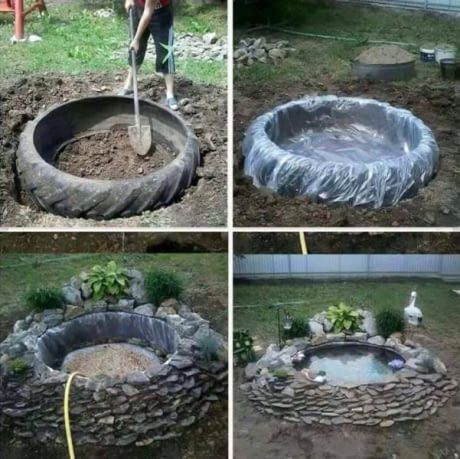 My Kubota LA525 loader weighs 805 lbs, and much of that weight hangs off the front of the tractor, making the front axle act as a fulcrum. The weight of the loader on the front subtracts from the effective weight on the back tires, and moves the center of gravity a lot farther forward.
My Kubota LA525 loader weighs 805 lbs, and much of that weight hangs off the front of the tractor, making the front axle act as a fulcrum. The weight of the loader on the front subtracts from the effective weight on the back tires, and moves the center of gravity a lot farther forward.
A heavy load in the loader bucket magnifies this effect and in certain situations can cause the tractor to tip forward and possibly roll over leading to chaos, death and destruction.
Ballast in the rear tires helps to offset the weight of the loader and a load and moves the center of gravity back to a safer point. However, liquid ballast alone is not enough for safely carrying heavy loads in your loader. Adding a heavy implement on the 3 point like a ballast box or brush hog is the best way to ensure your tractor is as stable as possible.
Now, which liquid ballast you choose depends on how cold it gets where you live, how much your willing to spend, and what is available where you live. There are several good resources online comparing the different liquid ballasts but one of the best that I have found is on the Orange Tractor Talks website. This chart summarizes the characteristics of the most common types liquid tire ballast. Below the chart, the article covers pros and cons of each type. I’ll just hit the highlights of each.
There are several good resources online comparing the different liquid ballasts but one of the best that I have found is on the Orange Tractor Talks website. This chart summarizes the characteristics of the most common types liquid tire ballast. Below the chart, the article covers pros and cons of each type. I’ll just hit the highlights of each.
Water: Of course, water is the cheapest ballast since it is free, but offers no freeze protection and provides 8.3 lbs of weigh per gallon. So, you have to live in a warm climate to use water.
Calcium chloride: Calcium chloride is widely available can be cheap or expensive, depending on if your tires already have tubes installed or not. Mixed with water, it provides great freeze protection down to -50F and weighs a hefty 11.5 lbs per gallon, but it is highly corrosive and needs to be used in tires with tubes to protect your rims from rusting.
Ethylene Glycol: Ethylene Glycol antifreeze is the same kind that goes in your car’s radiator. It is a widely available, medium-priced solution that when mixed 50/50 with water, offers freeze projection down to -40F. And it weighs about the same per gallon as plain water. The main drawback is that it is very toxic to animals and actually attracts animals because it tastes sweet. So, if you get a leak in a tire, it’s not good news for critters.
It is a widely available, medium-priced solution that when mixed 50/50 with water, offers freeze projection down to -40F. And it weighs about the same per gallon as plain water. The main drawback is that it is very toxic to animals and actually attracts animals because it tastes sweet. So, if you get a leak in a tire, it’s not good news for critters.
Propylene Glycol: Propylene Glycol antifreeze has the same properties as ethylene glycol except that it is non-toxic. It is easy to get but expensive per gallon.
Windshield Washer Fluid: Windshield washer fluid is another popular ballast because of its wide availability and low cost per gallon. Used full strength in tires, it provides freeze protection down to -20F and weighs about the same per gallon as water. However, it is toxic to the environment, but at least it doesn’t attract animals.
Methanol: Methanol is medium-priced, but highly flammable and must be mixed with water to minimize risk of explosion or fire.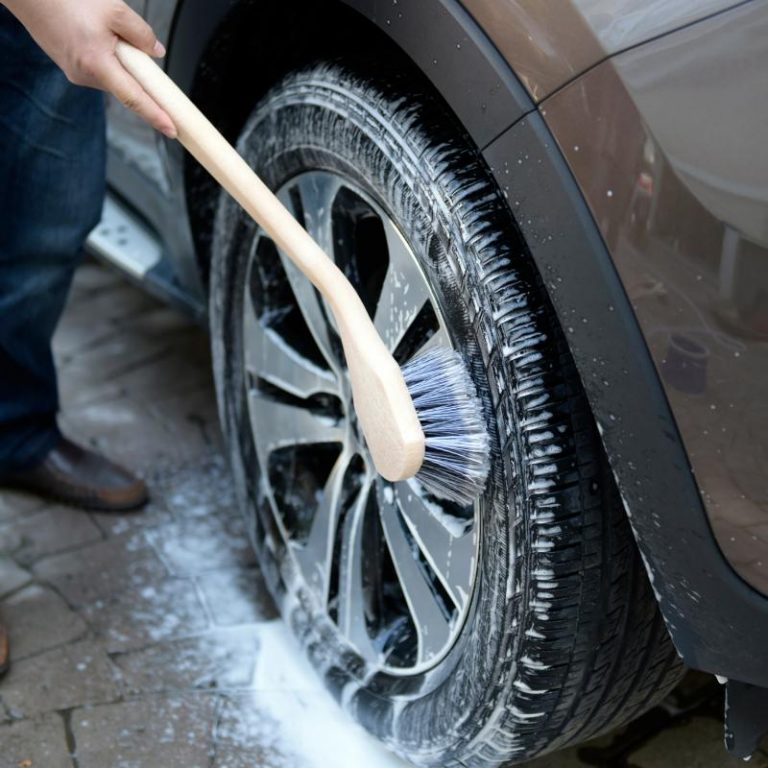 It is also toxic, but it can provide freeze protection down to -15F.
It is also toxic, but it can provide freeze protection down to -15F.
Beet Juice: Beet Juice is very expensive, but very effective, with freeze protection down to -35F and weighs almost 11 lbs per gallon. As a plus, it is completely safe and biodegradable. RimGuard is the most well-known brand however, it’s only available through dealer networks and predominately in the northern parts of the US. I can’t get it in Georgia.
Polyurethane foam: Finally, there is Polyurethane foam, which is very expensive, but is freeze-proof and can provide up to 12 lbs of weight per gallon. As a bonus, it makes your tires flat-proof. It is available through dealer networks. One downside worth mentioning is that it also makes for a rough ride on the tractor since there is no cushion in the tire.
I chose windshield washer fluid because of it lower cost and availability.
In particular, I bought Super Tech Windshield washer and de-icer, available at WalMart.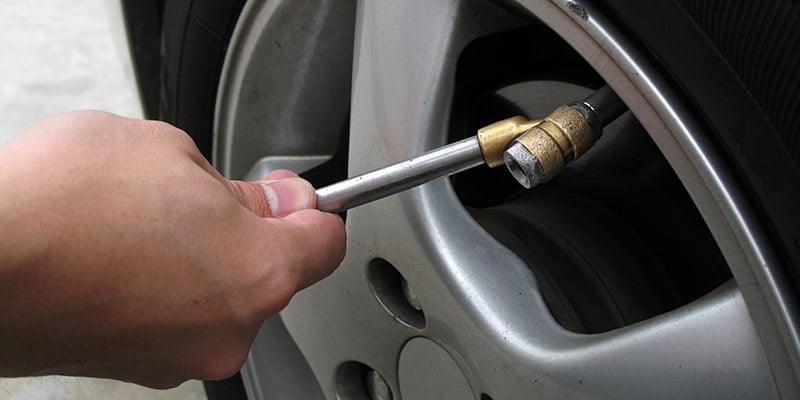 Well, sometimes. It seems to be seasonably available. I paid $2.17 per gallon for 60 gallons, which was the best price I could find at the time.
Well, sometimes. It seems to be seasonably available. I paid $2.17 per gallon for 60 gallons, which was the best price I could find at the time.
So how did I know how much fluid I needed? That’s where tire ballast fill charts come in. You can find many of them on line. I like the RimGuard tire fill chart.
The chart shows the most common sizes of tractor tires, the number of gallons they hold at a 75% fill level, and the number or pounds added when using RimGuard. My rear tires are 15-19.5 R4s, which hold 29 gallons each at a 75% fill level. So, I need 58 gallons total but I bought 60 gallon in case of an oopsy or two. To get the weight per tire for the ballast fluid of your choice, simply multiply the gallons per tire of your size tire by the pounds per gallon of your ballast fluid. So, in my case it is 29 x 8.3 which is about 240 pounds per tire, or a total ballast weight of 481 lbs.
Now let’s get on with filling the tires. Your tractor should be parked on a flat and level surface. The first step is to safely take the weight of the rear tires. Now you can do this one at a time, but I chose to jack both up at the same time and you’ll learn why later in this article. You just need to raise the tires barely off the floor or ground. My jack stands are rated for 6 ton each so no worries about them not holding the weight.
Your tractor should be parked on a flat and level surface. The first step is to safely take the weight of the rear tires. Now you can do this one at a time, but I chose to jack both up at the same time and you’ll learn why later in this article. You just need to raise the tires barely off the floor or ground. My jack stands are rated for 6 ton each so no worries about them not holding the weight.
The tire valve stem needs to be at the 12 o’clock position to fill the tire with fluid. You’ll need a tire valve stem tool to remove the valve core – slowly.
To fill the tires, you will need an air/water adapter kit. You can find them on Amazon or stores like Tractor Supply, which is where I got mine. They cost around $10.
There are several methods for loading liquid ballast into tires. I cover the full details in the video, but here are the basics.
Gravity Fill: The simplest is using a short piece of hose and a 5 gallon bucket that you can put in the seat of your tractor. The hose is connected to the air/water adapter which is screwed tightly onto the valve stem. The other end of the hose sits at the bottom of the five gallon bucket and you start filling the bucket with the ballast fluid of your choice. Gravity does the work from here, but it can be slow going. Occasionally, push the air release button on the the air/water adapter to let the air escape and make more room for liquid.
The hose is connected to the air/water adapter which is screwed tightly onto the valve stem. The other end of the hose sits at the bottom of the five gallon bucket and you start filling the bucket with the ballast fluid of your choice. Gravity does the work from here, but it can be slow going. Occasionally, push the air release button on the the air/water adapter to let the air escape and make more room for liquid.
Transfer Pump: Another popular method is using a transfer pump to load the liquid ballast in the tires as shown in the pictures below. Transfer pumps with garden hose connections are available from many retailers such as Amazon, Harbor Freight and Northern Tool. I got mine from Amazon.
The pump speeds the process up and you just have to keep pouring liquid in the bucket and occasionally stopping the pump and releasing excess air from the tire. Note that transfer pumps are not supposed to be operated dry so priming it by filling the hose with liquid before turning it on is important!
Transfer Pump with Manifold: This method involves building a manifold that attaches to the air/water adapter and allows you to monitor the pressure and release air without wasting any fluid.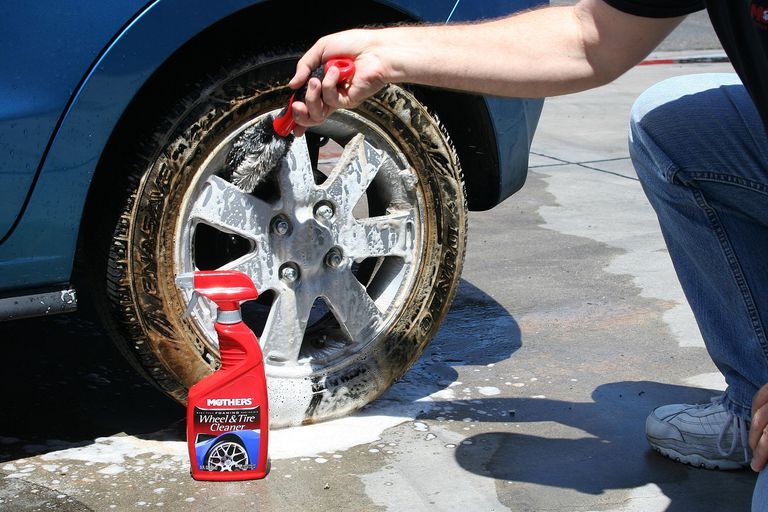 It is made of 3/4″ PVC pipe and common fittings available at hardware store. This idea came from David Dobb on his DaveKnowsHow YouTube channel and I thought it was brilliant, as so many of his contraptions are. I built my version of the manifold so that the hoses hang straight down to minimize stress on the valve stem.
It is made of 3/4″ PVC pipe and common fittings available at hardware store. This idea came from David Dobb on his DaveKnowsHow YouTube channel and I thought it was brilliant, as so many of his contraptions are. I built my version of the manifold so that the hoses hang straight down to minimize stress on the valve stem.
Here’s a closer look at the parts of the manifold. I use three, ¾” threaded PVC to garden hose adapters. Two garden hose valves. And a typical pressure gauge on the inlet side. Since this manifold is hopefully a one-time use device, I chose parts I could reuse elsewhere. In fact, the pressure gauge ended up replacing the one on our pool pump. I’ll keep the manifold body in case I ever have to fill tires again.
The hose connecting the manifold to the pump output side is a washing machine connector hose with female connections on both ends. The other two hoses can be whatever as long as they have a female connection on one end.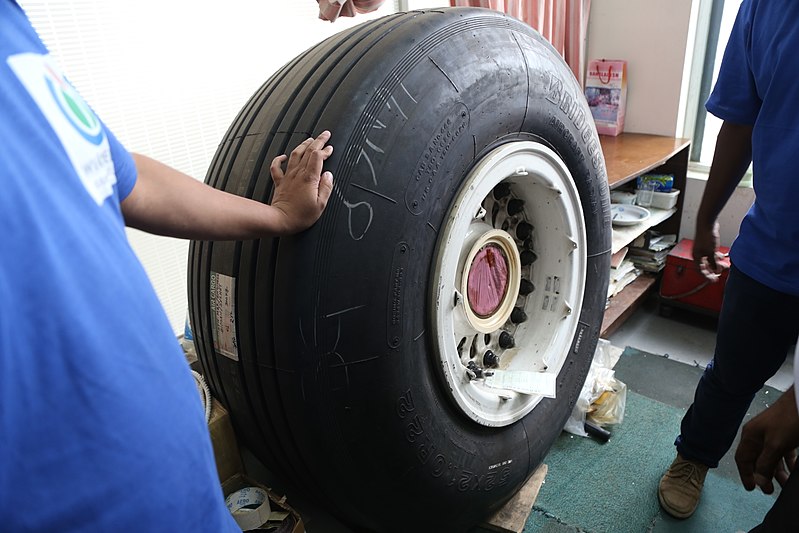
Before starting the pump, I fill the 5-gallon bucket with fluid and the prime the inlet hose.
The tire pressure quickly settled out at 20 PSI, which is perfect!
With the pump running, it was just a matter of keeping the 5 gallon bucket filled with fluid.
Note that the tires fill faster if you occasionally stop the pump, close the manifold inlet valve, then fully open the outlet valve to let excess air pressure out. You might want to pull the return hose out from the liquid as you do this so as to avoid blasting ballast fluid everywhere. Go ahead, ask me how I know this. Once the pressure is relieved, open the inlet valve, turn on the pump, and mostly close the outlet valve.
Once all the fluid is in, I can put the valve core back in the stem and pressurize the tire to about 20 psi, which is all that is needed for liquid filled tires.
So now the process needs to be repeated for the other tire. Again, the valve stem needs to be in the 12 o’clock position, but because I jacked up both rear tires, I can easily do this without moving the tractor. With the clutch locked in the pressed position and the range selector in neutral, I manually rotate the tire so that the valve stem is at 12 o’clock.
With the clutch locked in the pressed position and the range selector in neutral, I manually rotate the tire so that the valve stem is at 12 o’clock.
After filling the tire, I once again reinstall the valve core and pressurize the tire. Now I can safely take the tractor off the jack stands.
I must admit I put off this project because I was intimidated by it, but it turns out to be pretty easy to do if you are careful and have the right tools on hand. So if I can do it, you can do it!
Note: Links to Amazon products are Amazon Associate links that won’t cost you any extra, but will help support my efforts with a small commission on qualified products. Thanks for your support!
Like Loading...
Driver's advice
Author Admin Reading 2 min Views 263 Published Updated
Contents
 The most common filling is air, some experts advise using nitrogen, but there is also the option of filling with water. This article will discuss the consequences of such exploitation and the benefits of air.
The most common filling is air, some experts advise using nitrogen, but there is also the option of filling with water. This article will discuss the consequences of such exploitation and the benefits of air.
Contents
The rear wheels of a tractor are filled with water to balance the ride and get the job done faster, but for motorists the use of water in tires does not provide the same benefit.
Car tires will lose their cushioning properties, the vehicle will become unusable faster, and the service life will be reduced. However, there are also positive aspects of pumping wheels with water. To improve traction, the driving wheels are filled with fluid, and to improve handling, the steering wheels.
However, there are also positive aspects of pumping wheels with water. To improve traction, the driving wheels are filled with fluid, and to improve handling, the steering wheels.
Obviously, tires filled with water will weigh much more than those filled with air. Because of this, the load on the engine increases, the car accelerates more slowly, it skids more when cornering.
An air-filled wheel is lighter in weight, so the load on the suspension is less, as is fuel consumption.
Inner air does not affect the tire, but moisture has a negative effect on tire life.
A tire filled with air has a stable pressure and therefore is more resistant to temperature changes.
Filling the tire with water instead of air is only suitable in case of an accident, and even if there is no spare wheel, water in the tires is also acceptable for off-road vehicles (namely for driving on rough terrain). But when the wheel is filled with water, the life of the suspension is reduced, the water is sensitive to temperature changes, handling is reduced, and it is more difficult to pick up speed.
Rate the author
Over time, any villager and summer resident gets a lot of various wheeled vehicles that require constant attention and care, including the repair of pneumatic tires and their regular inflation. And it often happens that at the most necessary moment the wheels of turn out to be flat. And as technology ages, this happens more and more often. For example, these troubles began to haunt me constantly, and especially often in winter, in the most severe frost. And that's even worse.
To fill the wheel tire with foam, you first need to drill several holes in the rim with a diameter of 10 mm ...
Finally, I got tired of it, and I solved the problem radically - I “pumped up” the tire not with air, but with polyurethane foam. I first tried filling the tire with foam through the nipple hole. It turned out, but not entirely successful - in some places, due to traffic jams, air sacs remained unfilled with foam. In addition, a significant part of the foam from the hole of the nipple squeezed back.
In addition, a significant part of the foam from the hole of the nipple squeezed back.
But the trouble is the beginning! After trying several different options, I eventually found a way to fill the tire with foam without plugs or air pockets. To do this, I drilled several holes 010 mm around the circumference of the wheel disk in such a way that the tube from the foam can freely enter into them. Before starting to fill the tire with foam, it is necessary to prepare several wooden plugs-pegs (according to the number of drilled holes in the disk), which should fit tightly into these holes and prevent the foam from breaking free.
We insert the canister tube into any of the holes drilled in the disk and start the foam supply.
As soon as the first traces of foam that have reached it appear in the adjacent hole, we stop the supply from the can and immediately plug the first hole of the plugs tightly with a peg. After that, you can start feeding foam into the next hole. Then to the next...
Then to the next...
In the same way, you can fill the tires of any other wheeled equipment, such as a garden cart, with foam.
Fill the tire with foam as follows. We insert the tube of the can into any of the holes drilled in the disk and start the flow of foam. As soon as the first traces of the foam that has reached it appear in the adjacent hole, we stop the supply from the can and immediately plug the first hole tightly with a peg. After that, you can start feeding foam into the next hole. Then to the next. The last hole, as a rule, no longer needs to be foamed, and as soon as foam appears from it, you just need to plug it with a peg plug. With this sequence of filling, air sacs usually do not remain.
The process of self-vulcanization of the foam inside the tire - in a closed volume without air access - takes a little longer than under normal conditions. The operation of foam-filled wheels can be started no earlier than in a day. And with a large volume of tires, it is better to wait at least two days.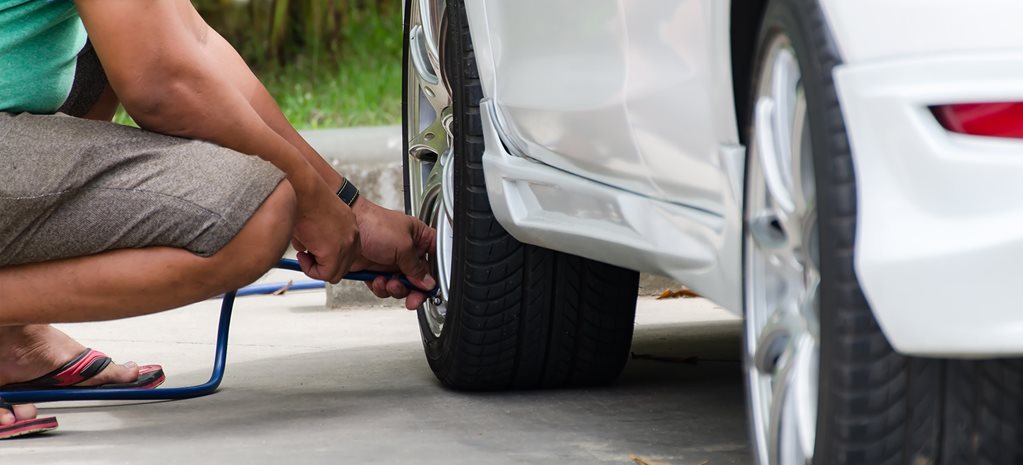
I have been using this technology for filling tires with foam for more than 10 years, and the first foamed tire is still working properly today, although I use it without any discounts both in winter and in summer. For several years, one of the wheels of my old truck was filled with foam. It no longer made sense to repair this wheel in the traditional way, and after filling it with foam, I drove it for quite some time, however, at low speed and for short distances, mainly in the village. The motorcycle that I use for trips to the forest for mushrooms has been running on foam tires for many years.
Initially, I had doubts about the durability of tires filled with foam, but over the years I have become convinced that without air, the foam does not break down at all and serves reliably, especially where high speeds are not needed. It is also noteworthy that lugs can be easily fixed on foamed wheels, and using the most common screws with nuts or screws for this. This is especially true when operating equipment in winter for driving on snow-covered roads or off-road.